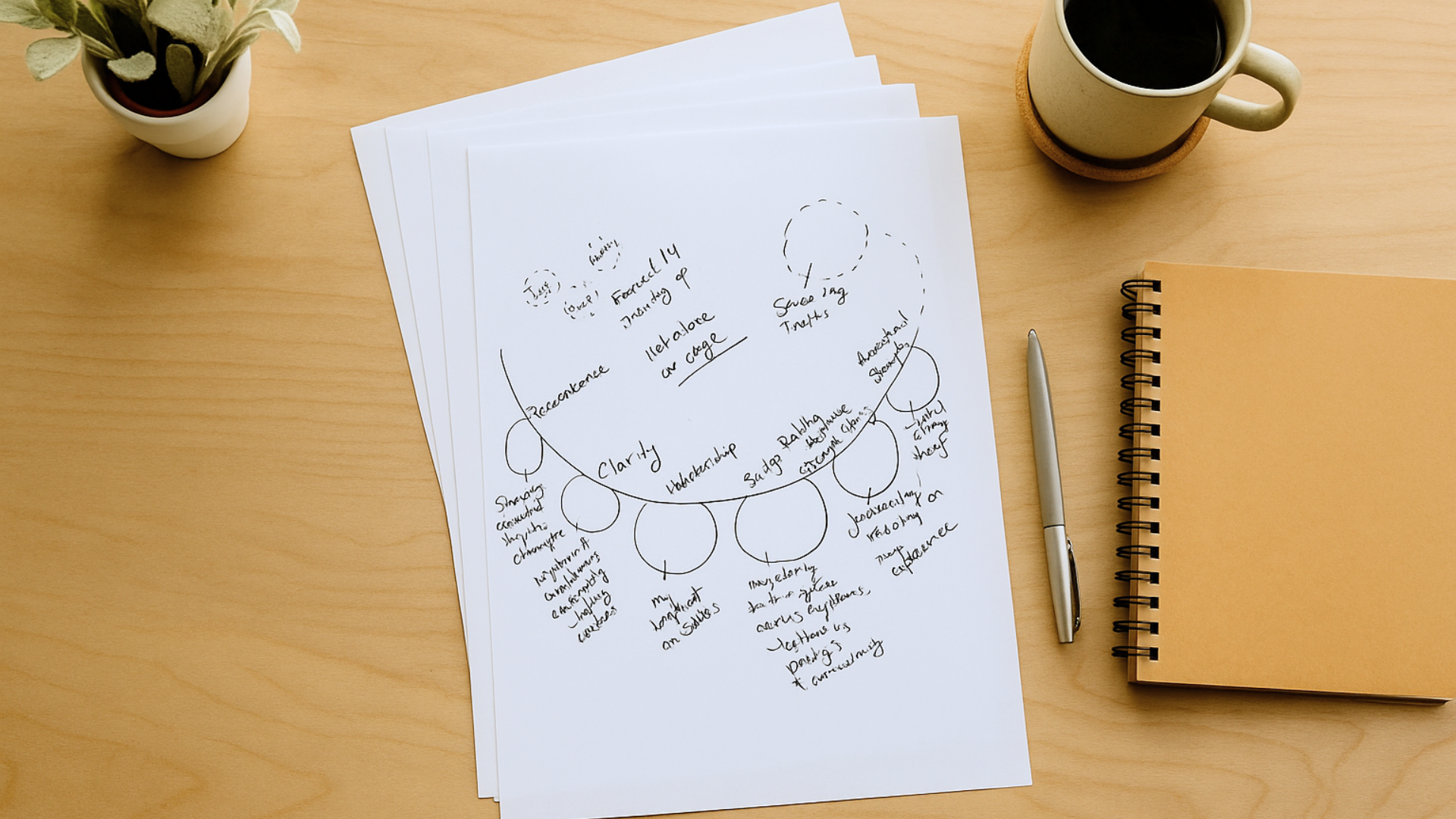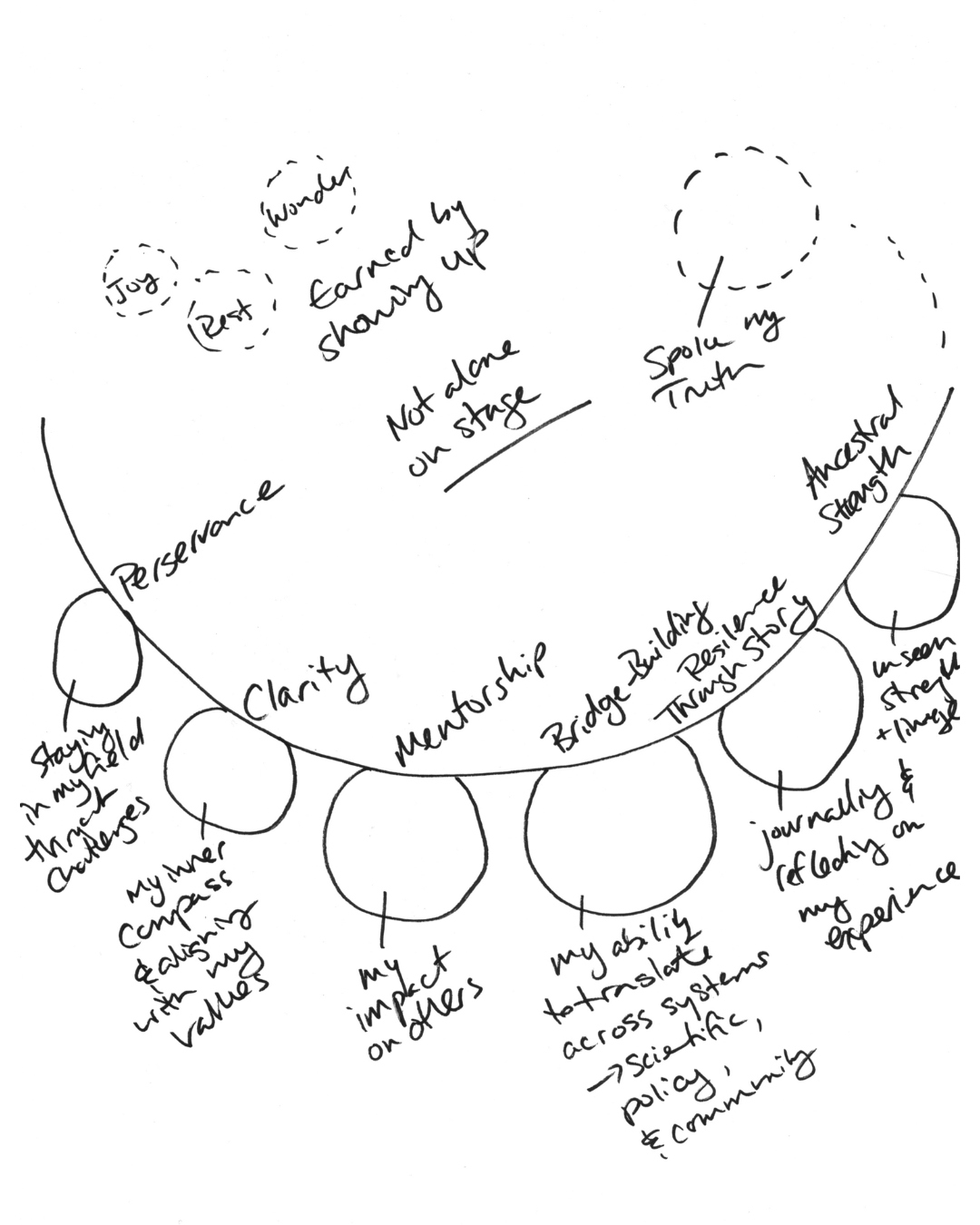When Doubt Creeps In: How One Drawing Helped Aisha Reclaim Her Voice

Aisha is a senior data analyst working in environmental science. She’s sharp, committed, and deeply thoughtful. Over the years, she’s worked across sectors to bring clarity and integrity to complex climate data. When we met, she had just been invited to give a keynote talk at a major European conference—an invitation that acknowledged not only her expertise, but her voice.
But she didn’t feel ready.
She said, “I know this is a big deal, but the closer it gets, the more I’m second-guessing everything. Do I sound credible enough? Am I using the right language? I believe in what I want to say, but part of me wonders... will they listen?”
If you’ve felt that kind of doubt, you’re not alone. I hear versions of this from so many of the women I coach in STEM. These moments of visibility—keynotes, interviews, panel invitations—don’t always come with confidence. Instead, they often surface old patterns of questioning. Not because you lack knowledge, but because you’ve spent years working in systems that made you prove your worth over and over. Often in quiet, invisible ways. And usually without recognition.
In this coaching session, I invited Aisha to try a drawing activity called the Pearl Necklace. It’s a reflective exercise that helps you gather the strengths you’ve built over time and reconnect with what you already know.
She said yes.
The Power of the Pearl Necklace
We began by drawing a soft, simple curve across the page—a thread that would represent her career and life path. Then, one by one, she started adding “pearls.” Each one was a word, a memory, or a moment that held meaning.
The first was Perseverance. She talked about the times she nearly left the field—burned out, shut out, worn down by the pressure to constantly explain herself. But she stayed. Not because it was easy, but because the work mattered to her. Drawing that pearl helped her remember her reasons.
Next came Clarity. Even when doubt had crept in before, Aisha had always trusted what felt right. She’d turned down roles that didn’t align with her values. She’d spoken up when data was being twisted. This pearl reminded her that her intuition wasn’t a weakness. It was her guide.
Then she added Mentorship. She’d quietly supported younger colleagues—especially women and racialized professionals—helping them feel like they belonged. It wasn’t always acknowledged, but it mattered. “That’s what gives me courage,” she said. “I’m not just speaking for myself.”
She kept going: Bridge-Building, Resilience Through Story, Ancestral Strength.
Each pearl captured something real about who she is. Not just the public-facing wins, but the deeper values that had shaped her path.
By the end, her whole posture had changed. Her voice softened. You could feel something settle.

Why Drawing Helped
This wasn’t about boosting confidence or writing out a list of wins. It wasn’t about pretending she felt great. The act of drawing helped Aisha see her own strength—and that made the difference.
Here’s why this kind of visual coaching tool works so well, especially for women who spend most of their time in data-heavy, logic-driven work.
1. Drawing slows you down
Most of us are in constant motion—replying to messages, jumping between tasks, trying to stay productive. Drawing gives your mind a chance to pause. It makes space to listen inward. Aisha wasn’t rehearsing her keynote. She was reconnecting with herself.
2. Images bring the unseen to light
The Pearl Necklace isn’t just symbolic. It helps you name and externalize what you’ve been carrying. When your contributions have gone unnoticed, when you’ve shouldered emotional labour or faced exclusion, this kind of clarity can be incredibly affirming.
Aisha didn’t invent those pearls. She’d been holding them all along.
3. It becomes something you can return to
Unlike a checklist or worksheet, a drawing holds feeling. It becomes a gentle reminder you can come back to—before a big meeting, after a tough week, or when doubt shows up again.
Aisha told me she planned to look at her Pearl Necklace drawing the morning of her keynote. Maybe even add a new one afterwards. “Spoke My Truth,” she said.
Coaching Isn’t About Fixing
A lot of people assume coaching is about improvement. About fixing something. But the most powerful moments I’ve witnessed in coaching don’t come from adding anything. They come from remembering what’s already there.
Drawing is one way to do that.
It quiets the inner critic.
It encourages reflection.
And it honours the strengths that don’t always show up on a resume, but are still at the core of who you are.
Try It for Yourself
You don’t need to be an artist. All you need is a blank piece of paper and a few minutes.
- Start by drawing a soft curve or line to represent your path.
- Then, add “pearls” along the line—words, moments, insights, or values that matter to you.
These might be overlooked skills, personal truths you’ve protected, or small acts of bravery others missed.
Ask yourself:
- Which pearl feels the most important today?
- Which one do you want to carry forward with you?
- What new pearl are you creating right now?
Give yourself time. You might be surprised by what comes up when you stop to look.
Looking for More?
If you’ve been second-guessing yourself or feeling disconnected from your strengths, you’re not alone. The 5-Day Creative Reset Challenge is a gentle, guided way to come back to yourself through short, low-pressure creative practices.
It’s not about fixing anything. It’s about remembering what you already carry—and making space to honour it.
Join the free challenge today and take the first step back to your own voice.